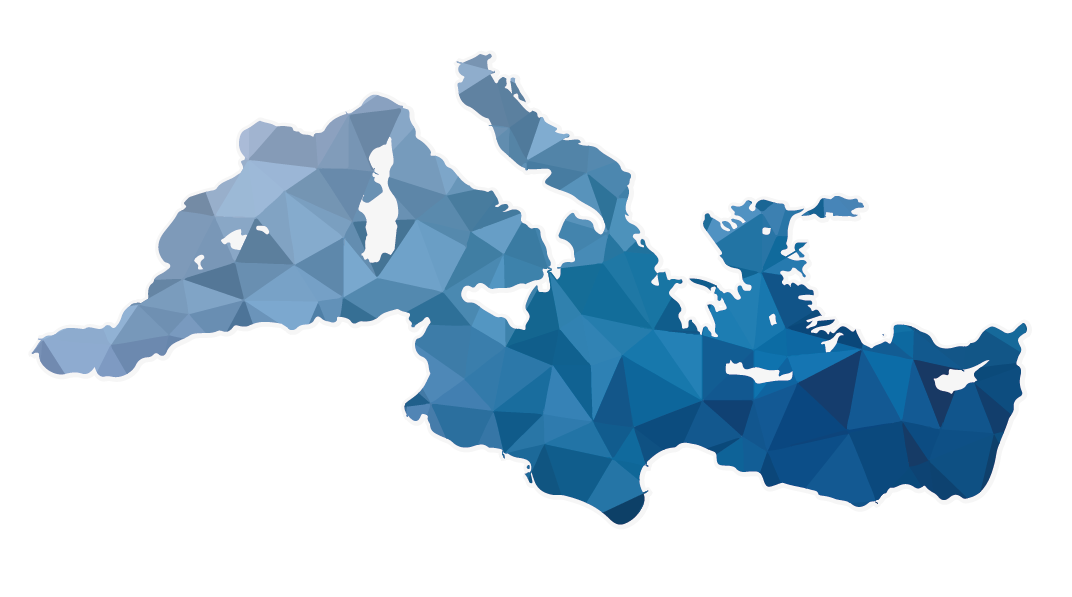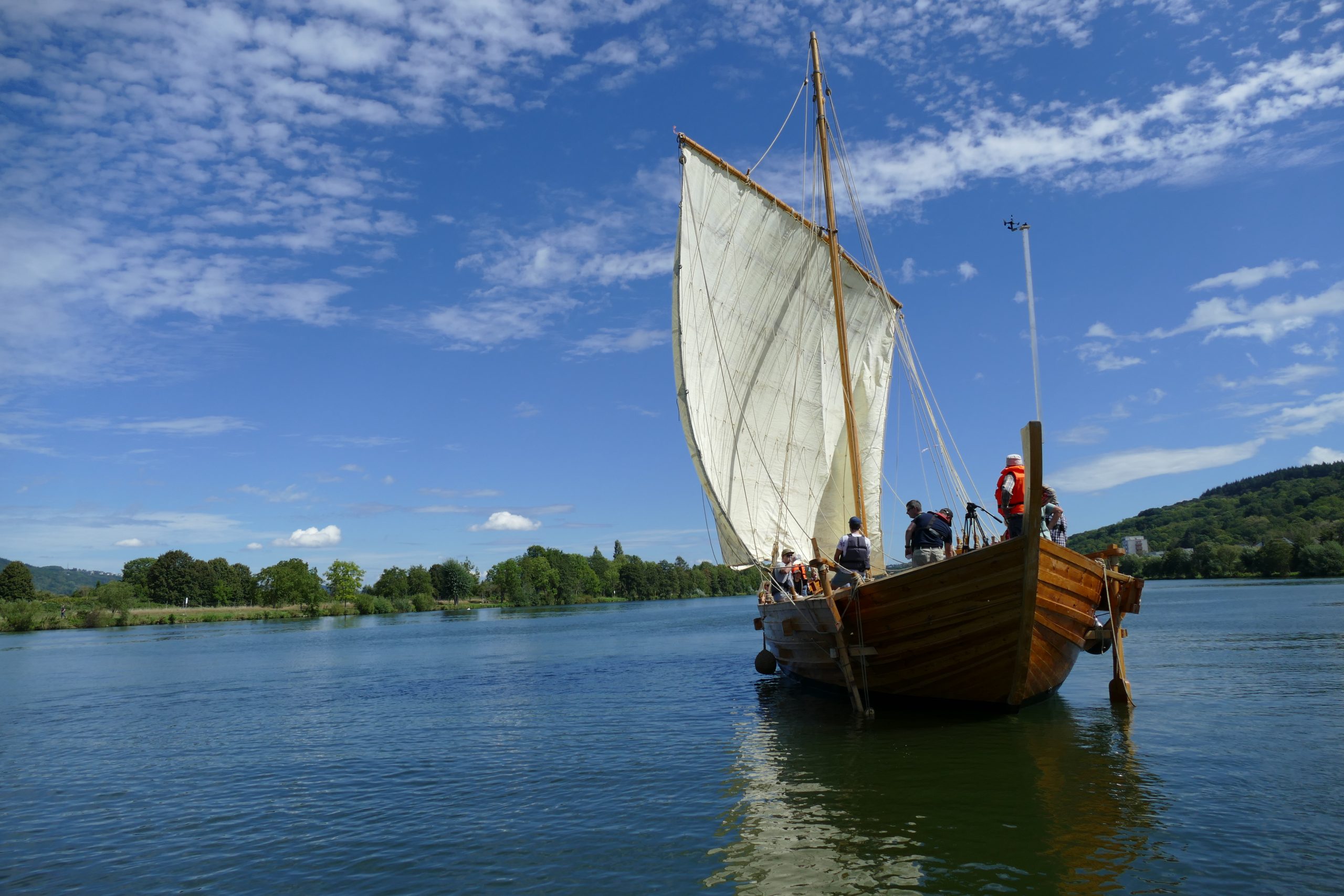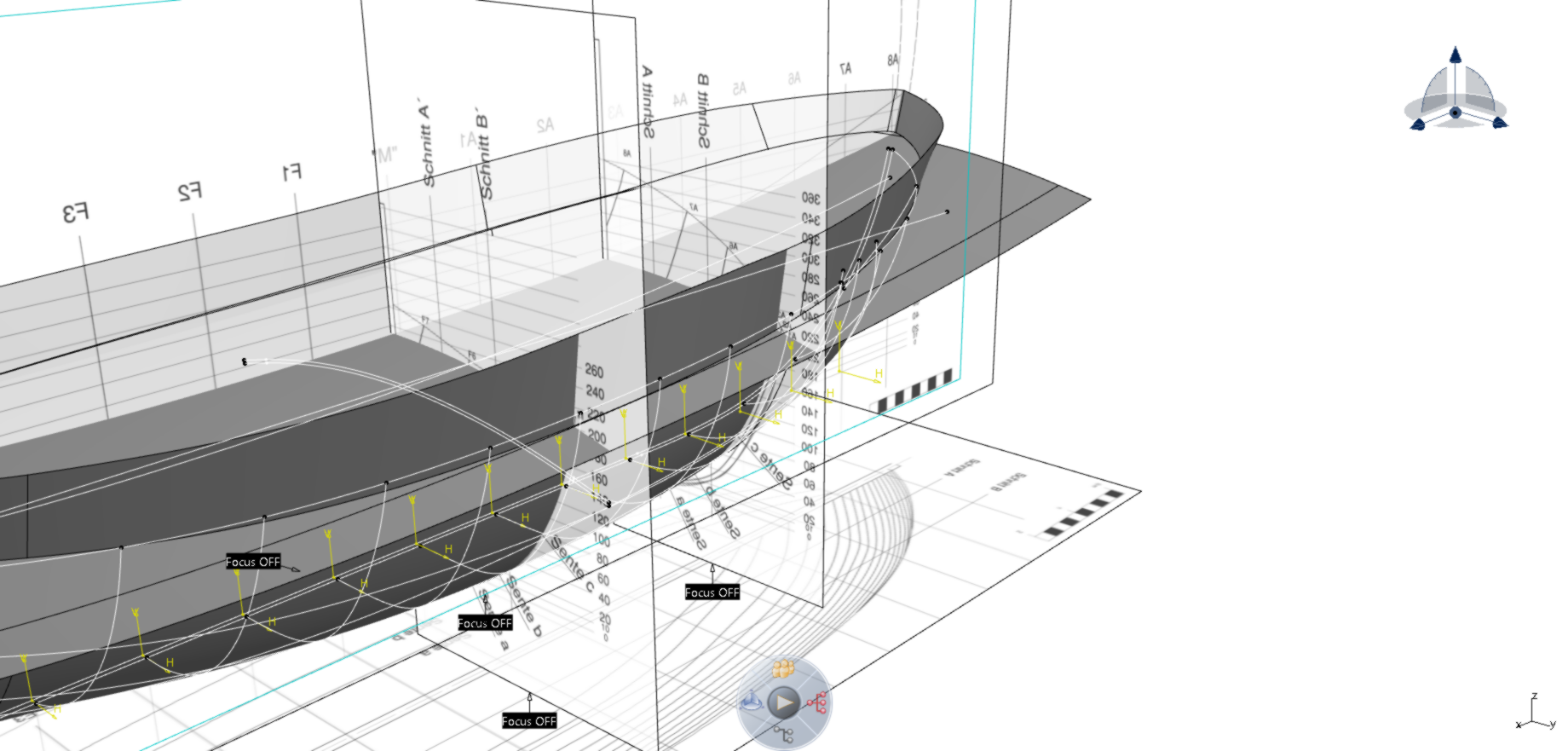Reconstructions
An important component of the long-term project is the virtual simulation of ship data and the creation of polar diagrams using scale models. This means that various ships are not only virtually reconstructed in 3D, but also recreated to scale. On the one hand, the collection of performance data on Roman merchant ships is based on the 1:1 reconstruction “Bissula” (for more information, see the section “Data analysis”). On the other hand, a total of four models of Roman merchant ships are simulated virtually and recreated as models. The 1:3 replica of the Bissula, christened Bissulina, has already been undergoing intensive testing at the University of Trier since summer 2022 (for more on this, see “Data analysis”) and serves as an important reference model for calibrating the transferability of the sail data to the original size. In the further course of the project, scaled-down models of the wrecks “St. Gervais”, “La Madrague de Giens” and “La Bourse” were added.
The 3D models can be used to determine the resistance values of the ship’s hulls using CFD simulation. These data are supplemented with the performance data collected and evaluated on the Moselle and surrounding waters to form a polar diagram. With the help of the performance data obtained here, the DIMAG atlas will be supplemented with further ship types in the course of the project.
The 1:1 reconstruction “Bissula”.
The most important tool for determining the performance of ancient sailing ships is the 1:1 reconstruction of the Bissula, a Lauron II type ship. DIMAG will primarily work with the measurement data obtained here in the first phase. The Bissula, with a length of just under 16 meters, a width of just over 5 meters and a sail area of about 100 square meters, is a somewhat smaller but widespread representative of Roman cargo sailing vessels. Their calculated load volume is up to 30 tons. Further information on the ship can be found at www.roemerschiffe.de.
The 1:3 reconstruction “Bissulina”.
The Bissulina was launched in August 2022 and has since been tested for sailing performance on the Moselle in the same stretch as her big sister ship Bissula. Unlike her larger counterpart, the Bissulina was not built at the University of Trier, but by master boat builder Matthias Helterhoff in Krummin. Since the primary purpose of the 1:3 model is to test the transferability of the Bissula’s results, more compromises were made in the construction than in the 1:1 reconstruction, as can be seen, for example, in the simplified (read: pragmatic) deck construction.
The Bissulina can be piloted by two people, in practice a third crew member is on board for better towing suitability and for ongoing checking of the measuring electronics. On the towboat itself, another two crew members are required, so that the same number of people are needed to test the Bissulina as are needed for trips by the Bissula.
3D simulations
In the DFG predecessor project “Laurons 2”, it was already possible to virtually determine the resistance values of the ship’s hull in a flow model using CFD simulation. Even if the sailing characteristics cannot be simulated – which would be of great advantage, as this would eliminate the need to rebuild and test models – the virtual reconstructions already provide a lot of information about the performance of antique sailing ships through the drag coefficients, especially when comparing the different types with each other.












